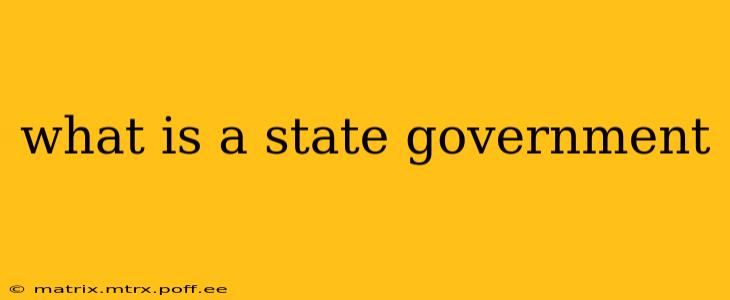State governments are crucial components of the U.S. federal system, representing the levels of government closest to the people. They hold significant power and responsibility, managing a vast array of services and policies impacting daily life. Understanding their structure and functions is key to comprehending the complexities of American governance.
What are the Key Responsibilities of a State Government?
State governments possess broad authority over matters not explicitly delegated to the federal government by the U.S. Constitution. Their core responsibilities typically include:
-
Education: State governments largely oversee public education systems, setting curriculum standards, funding schools, and regulating teacher certification. Significant variations exist between states in funding levels, educational approaches, and performance outcomes.
-
Public Health: Protecting public health is a primary state function. This involves regulating healthcare providers, managing public health emergencies (like pandemics), and overseeing sanitation and environmental safety.
-
Transportation: State governments are responsible for building and maintaining state highways, bridges, and other transportation infrastructure. They also often play a role in regulating public transportation systems within their borders.
-
Public Safety: This encompasses law enforcement, corrections (prisons and jails), and emergency services (fire departments and emergency medical services). State police forces operate alongside local law enforcement agencies.
-
Environmental Protection: States play a significant role in environmental regulations, managing natural resources, and implementing environmental protection laws, often in coordination with federal agencies.
-
Social Welfare: Many social welfare programs are administered at the state level, including Medicaid (healthcare for low-income individuals), unemployment insurance, and programs assisting individuals with disabilities.
-
Economic Development: State governments actively promote economic growth through incentives to businesses, job training initiatives, and development of infrastructure that supports commerce.
How is a State Government Structured?
The structure of state governments generally mirrors that of the federal government, with three branches:
-
Executive Branch: Headed by the governor, the executive branch is responsible for implementing state laws and policies. The governor appoints various officials and heads state agencies.
-
Legislative Branch: The state legislature, usually consisting of a Senate and a House of Representatives (or Assembly), creates state laws. Legislators are elected by the citizens of their respective districts.
-
Judicial Branch: The state court system interprets state laws and settles legal disputes. The structure of the judicial branch varies by state but typically includes trial courts, appellate courts, and a state supreme court.
What Powers Do State Governments Have?
State governments possess significant "police powers," enabling them to regulate the health, safety, and welfare of their citizens. This includes creating and enforcing laws on a wide range of issues within their borders. However, these powers are subject to limitations imposed by both the U.S. Constitution and the state's own constitution.
How Do State Governments Interact with the Federal Government?
The U.S. government operates under a system of federalism, where power is shared between the federal government and the state governments. This often involves cooperation, but also potential conflicts. Federal laws supersede state laws when there's a direct conflict. Federal funding often influences state policies, as states may rely on federal grants to support various programs.
What is the Difference Between a State Government and a Local Government?
While both are sub-national governments, they have different jurisdictions. State governments have broader authority over a larger geographical area, covering matters of statewide concern. Local governments (counties, municipalities, etc.) are responsible for administering services and regulations within their smaller geographic boundaries, often focusing on issues more directly impacting their residents. They frequently receive funding and authorization from the state government.
What are some examples of state government actions?
Examples of state government actions are numerous and vary by state. Some include passing laws on minimum wage, regulating hunting seasons, establishing public universities, funding highway construction, and implementing environmental protection measures.
This detailed explanation offers a comprehensive understanding of state governments in the United States, encompassing their responsibilities, structure, powers, interactions with other levels of government, and examples of their actions.
